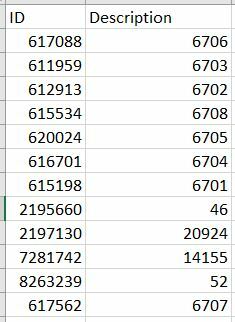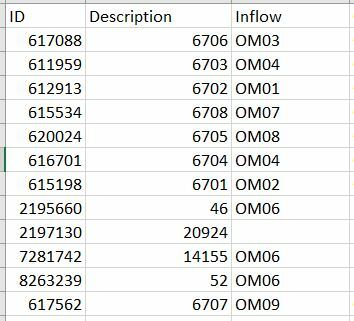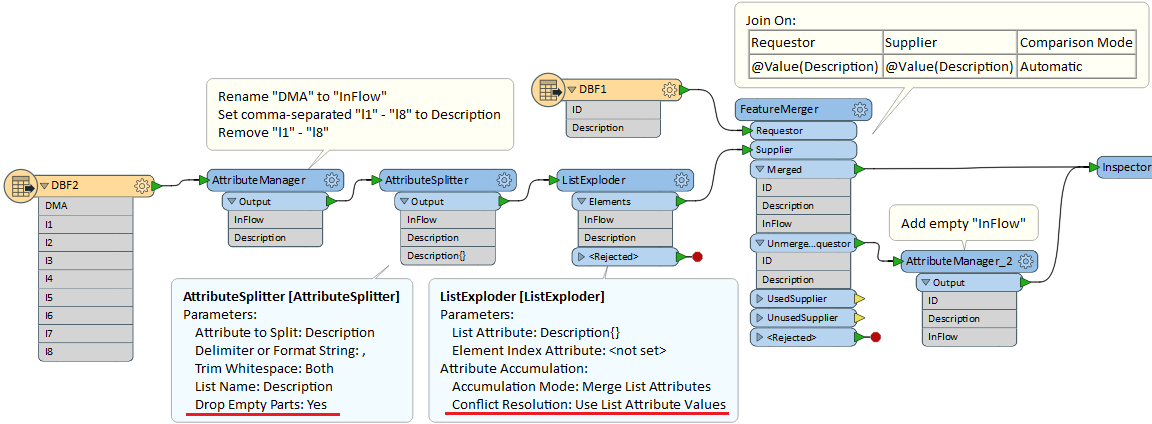I was able to get this to work using an InlineQuerier that has 2 output ports. The DMA port outputs all "matched" records, and the DBF1 port outputs all records from DBF1. I used the following SQL statement for the DMA port:
SELECT "DMA","Description","ID"
FROM "DBF1" JOIN "DBF2"
ON "Description" IN ("I1","I2","I3","I4","I5","I6","I7","I8")
Then I used a FeatureMerger (DBF1 = Requestor, DMA = Supplier) that joined on Description. I connected the Merged port AND the UnmergedRequestor port to an AttributeManager (this gives me 1 stream with my 12 original records) - In the AttributeManager, I created the field Inflow, and set it to DMA, if DMA has a value. Otherwise, Inflow is set to a space. Then I removed the DMA field.
This is the output I got:
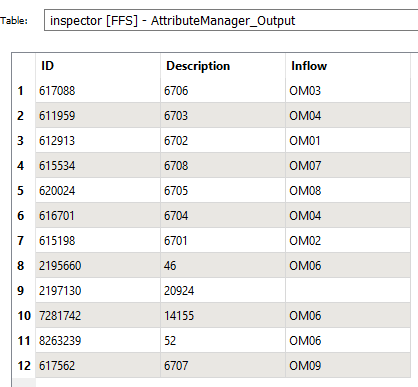
Here is a screenshot of the entire workspace:
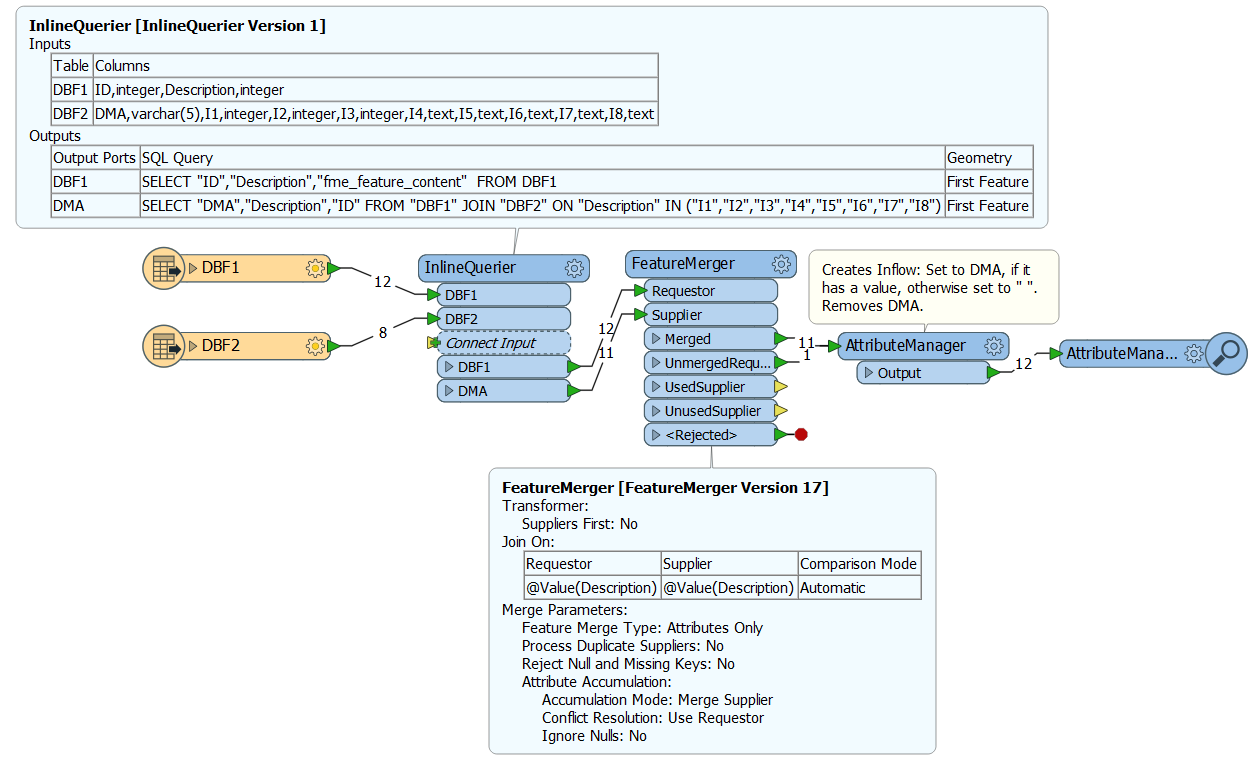
And a screenshot of the AttributeManager properties:
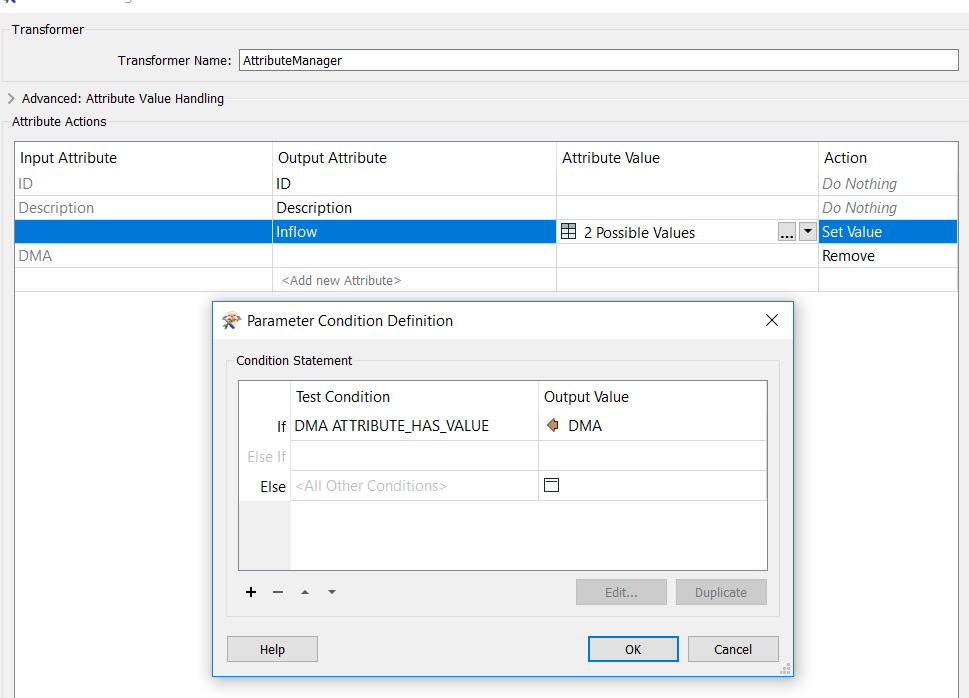
I have also attached the workspace, in case you want to look at it.
Originally, I was going to output the "non-merged" features through another port of the InLineQuerier, but I also was unable to get the NOT IN statement to work successfully. This process is a little clunkier, but it works.
-Courtney
